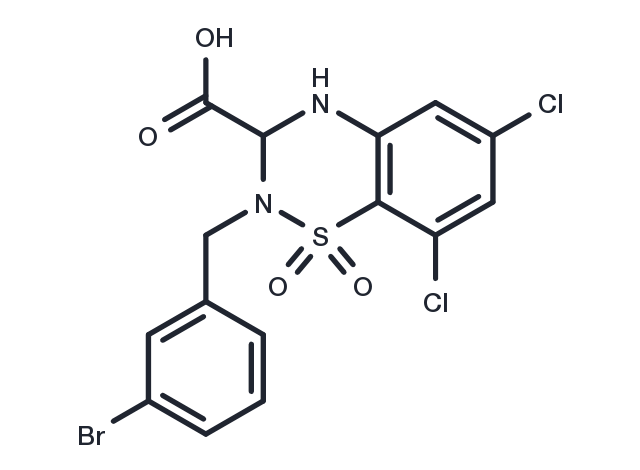store at low temperature
Powder: -20°C for 3 years | In solvent: -80°C for 1 year

RPR104632 is a novel and potent antagonist located at the NMDA glycine site with neuroprotective activity.

| Pack Size | Availability | Price/USD | Quantity |
|---|---|---|---|
| 1 mg | In stock | $ 700.00 | |
| 5 mg | In stock | $ 1,800.00 |

| Description | RPR104632 is a novel and potent antagonist located at the NMDA glycine site with neuroprotective activity. |
| Targets&IC50 | Cerebral cortex:4.9 nM (Ki,rat), Neuroprotection:4 μM (EC50), Neuro:4 μM (EC50), Cerebellar slices:890 nM (rat), [3H]-TCP:55 nM |
| In vitro | RPR104632 antagonizes the binding of [3H]5,7-dichlorokynurenic acid to the rat cerebral cortex with a Ki of 4.9 nM. In the presence of N-methyl-D-aspartate (NMDA), RPR104632 inhibits [3H]N-[1-(2-thienyl)cyclohexyl]-3,4-piperidine ([3H]TCP) binding with an IC50 of 55 nM. In a non-competitive manner, RPR104632 inhibits the NMDA-evoked increase in guanosine 3',5'-cyclic monophosphate (cGMP) levels of neonatal rat cerebellar slices (IC50 = 890 nM) and markedly reduces NMDA-induced neurotoxicity in rat hippocampal slices and cortical primary cell cultures. While MK-801 (1 μM) completely protects the CA1 and CA3 pyramidal neurones against NMDA-induced toxicity, these effects are not blocked by glycine. RPR104632 consistently produces a significant neuroprotective effect against all NMDA-induced toxicity and has no effect when added alone at concentrations up to 10 μM. The neuroprotective potency of RPR104632 is characterized by an EC50 of 4 μM[1]. |
| Molecular Weight | 466.13 |
| Formula | C15H11BrCl2N2O4S |
| CAS No. | 154106-92-0 |
store at low temperature
Powder: -20°C for 3 years | In solvent: -80°C for 1 year
You can also refer to dose conversion for different animals. More
bottom
Please see Inhibitor Handling Instructions for more frequently ask questions. Topics include: how to prepare stock solutions, how to store products, and cautions on cell-based assays & animal experiments, etc.
RPR104632 154106-92-0 Neuroscience NMDAR RPR 104632 RPR-104632 inhibitor inhibit
